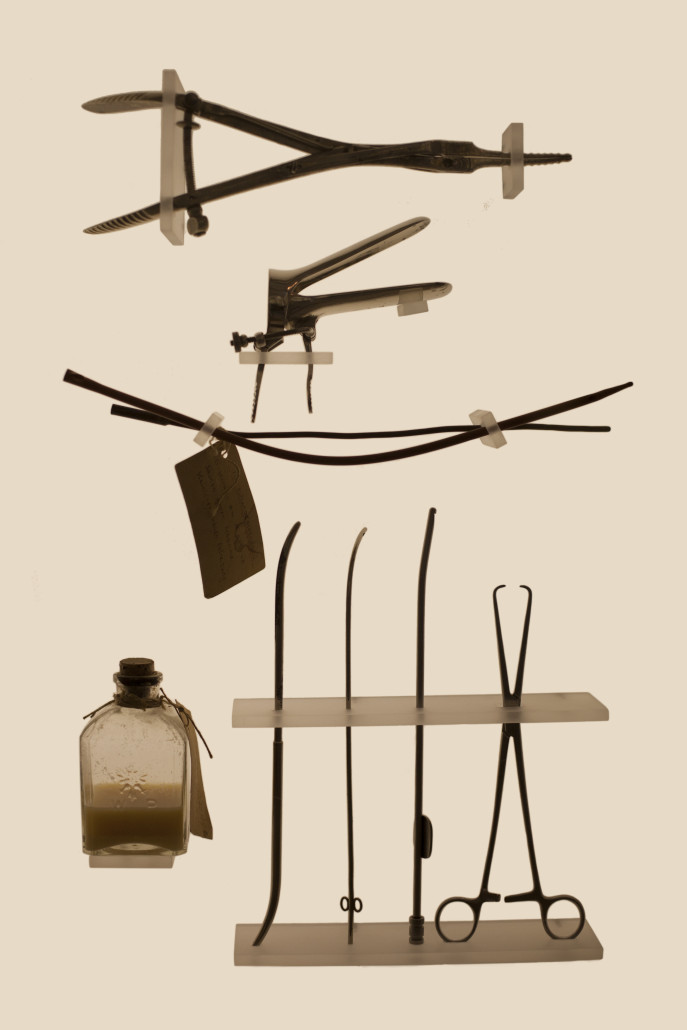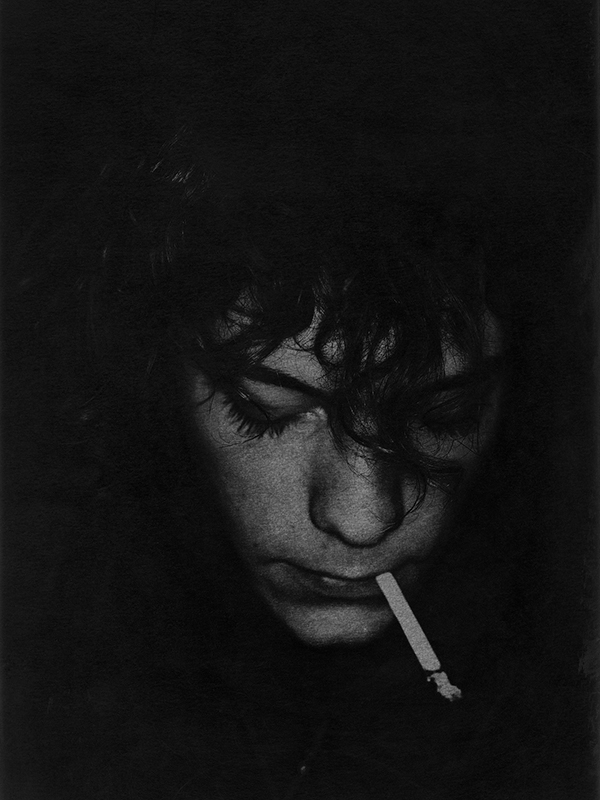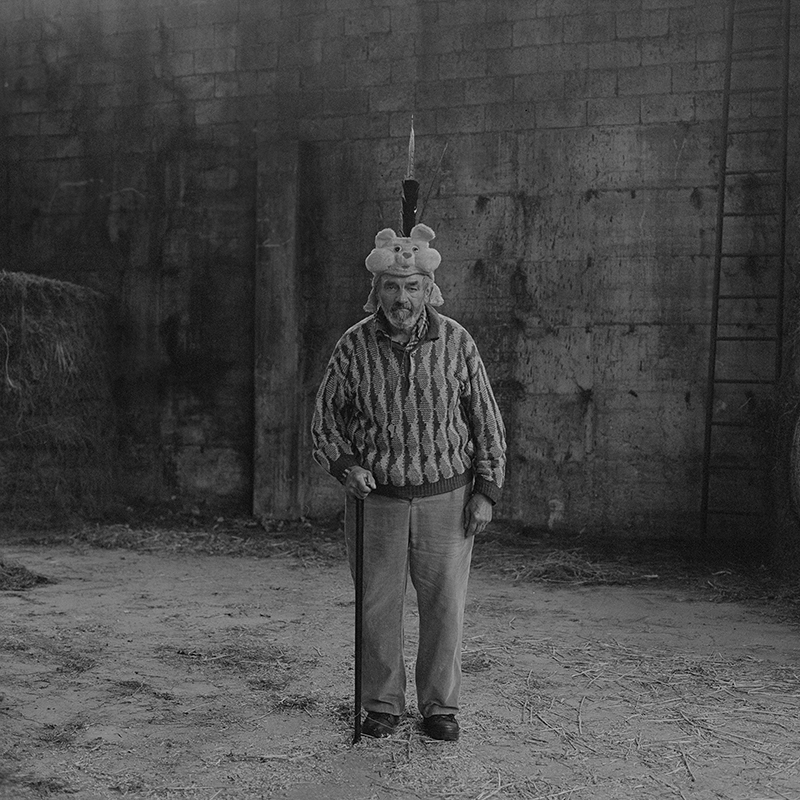* Traduzione italiana in calce.
The 47th edition of the famous French festival founded by photographer Lucien Clergue, the Rencontres d’Arles, kicked off on Monday 4th July and will end on Sunday 25th September. «Photographers are storytellers. They take us along on their stories» and for the first time these stories came out of the historical location of the region of Arles to recount themselves in other Provence centres such as Avignon, Marseille and Nîmes, with a series of exhibitions called Grand Arles Express.
Ready to welcome all the visitors that will take advantage of its vicinity to the French Riviera, the festival shows 40 exhibitions and up to 137 artists with workshops, conferences, talks with the artists, screenings and evening events between its different sections. Amongst the headings chosen for the stories of this year’s edition are Western Stories, Monsters & Co., Africa Pop and Après la Guerre, featuring artists such as Bernard Plossu, Alexandre Guirkinger, Don McCullin, Charles Fréger and William Klein.
Previously compared to David Lynch for his photography project Horizonville, Swiss artist Yann Gross comes to the Riviera with the award winning book of the Meetings Dummy Luma 2015 competition, The Jungle Show, for the I Am Writing To You From A Far Off Country story. He will be showing us the different faces of contemporary Amazonia from a romanticised view of the savage lands to the more serious topics of progress and development of third world countries.
Part of the same story will be PJ Harvey’s and Seamus Murphy’s photography and poetry project, The Hollow of The Hand, initiated for the making of the English singer’s most successful album Let England Shake (2011). The continuing collaboration between the two artists from 2011 to 2014 culminated in this beautiful collection of poems, songs and photos from post-war Kosovo, Afghanistan’s ongoing destruction and Washington DC’s conflicting reality as the symbol of power.
Important topics aimed at divulging awareness are at the base of most stories and most artists’ projects. Take On Abortion by Spanish artist Laia Abril, a series of pictures showing tools and traumatic methods of abortion and contraception still used in countries were legal means of abortion are not available. It’s the first chapter of her new long-term project A History of Misogyny, a visual research undertaken through historical and contemporary comparisons. Abril is not new to the use of photography and video to raise awareness on delicate topics: in 2014 her photobook The Epilogue was published, accompanied by a short introductory video, on the indirect victims of ‘eating disorders’, showing the dilemmas and struggles confronted by many young girls and their families.
On Abortion is a 50-50 visual and text based project where Abril also tells the stories of the women whose lives have been affected first by the struggle of having to resort to these dangerous methods and then by the society coercion around the act of abortion itself.

Abortion instruments, including soap and enema syringe widely used to terminate pregnancies by inserting it in the womb. This resulted in a miscarriage but often the death of the woman. From the fifteenth century, these thick piston cylinders were used to cleanse the bowel, but the filling tube could be replaced by a longer tube to flush other body parts. Moreover, this instrument fulfill the necessary condition for any tool to abortion: it is not aroused suspicions. Abortion is illegal, various objects were converted for this use; during police checks suspicious object was found. Abortionists could well conceal their activity but poor hygiene and lack of medical staff resulting from the legal ban cost the health and even the lives of many women. Museum of Contraception and abortion in Vienna, Austria, August 2015. Courtesy of the artist / INSTITUTE.
![On Abortion Tourism, Marta (Krakow, 29). On January 2nd, 2015, she was forced to travel to Slovakia to have an abortion, which is illegal in Poland unless a womans health is at risk, the foetus is malformed or the pregnancy is the result of a criminal act. Because she learned about her pregnancy during Christmas time, she had to a wait few weeks before making the trip. The anxiety of waiting made her try desperate (and cheaper) alternatives: I took a bath in boiling water and swallowed many aspirins, I did not succeed. I was too afraid to hurt myself. I just wanted to end it, I wanted to feel stronger than the law. On her 7th week of pregnancy, 445 euros in hand (all the money she had at that time), she jumped into a van at a gas station in Krakow, together with two more gravid girls, and travelled to an abortion clinic in Sliac specialised in welcoming polish women unable to have the procedure in their country. Although the almost 15-hour experience passed without any altercation, Marta had to face herat that time, coercive boyfriend. He begged me to not do it [
] when I called him during the trip complaining about the van's bad smell, he answered: that seems fair, murderers should be treated as cattle. Krakow, Poland, 2016. Courtesy of the artist / INSTITUTE.](https://www.labalenabianca.com/wp-content/uploads/2016/07/2016-ABR-cat02-773x1030.jpg)
On Abortion Tourism, Marta (Krakow, 29). On January 2nd, 2015, she was forced to travel to Slovakia to have an abortion, which is illegal in Poland unless a womans health is at risk, the foetus is malformed or the pregnancy is the result of a criminal act. Because she learned about her pregnancy during Christmas time, she had to a wait few weeks before making the trip. The anxiety of waiting made her try desperate (and cheaper) alternatives: I took a bath in boiling water and swallowed many aspirins, I did not succeed. I was too afraid to hurt myself. I just wanted to end it, I wanted to feel stronger than the law. On her 7th week of pregnancy, 445 euros in hand (all the money she had at that time), she jumped into a van at a gas station in Krakow, together with two more gravid girls, and travelled to an abortion clinic in Sliac specialised in welcoming polish women unable to have the procedure in their country. Although the almost 15-hour experience passed without any altercation, Marta had to face herat that time, coercive boyfriend. He begged me to not do it [ ] when I called him during the trip complaining about the van’s bad smell, he answered: that seems fair, murderers should be treated as cattle. Krakow, Poland, 2016. Courtesy of the artist / INSTITUTE.
At the Rencontres Abril’s work is part of the Platforms of The Visible story together with Joao Pina, Stéphanie Solinas and Piero Martinello.
The latter’s project, Radicalia, starts from the definition of the word ‘Radical’ according to the Grande dizionario della lingua italiana by Salvatore Battaglia. It’s the project that saw the Italian photographer travelling around Italy looking for men and women who have chosen a radical lifestyle.
The book, winner of the 2015 Photo Folio Review, is divided into five chapters and explores the lives of criminals, ravers, religiously devoted men, cloistered nuns and fools, through photographic portraits. Martinello finds himself taking long walks and chatting with the interesting and misunderstood characters of small villages in the north-east of Italy; talking to devotees on Patron Saints’ parades trying to reconnect these people’s devotion to the radical choices of the Saints they cherish; searching for mugshots of Camorra’s and Ndrangheta’s bosses through police archives in the south of Italy to recreate family trees collages for each one of them (ten in total); catching the expressions of young ravers under the effect of drugs; and analysing the lives of cloistered nuns by showing their passport photos to detach them from the common idea of unhappy women behind barred windows. It’s a portraiture essay on seemingly different people yet united by the same extreme way of thinking.
The 12 stories of the Rencontres d’Arles 2016 are expected to welcome even more people than its previous editions (93,000 visitors in 2015), so if you’re thinking of going to the south of France for your summer holidays I suggest you plan to check out one of the leading photography events in Europe.
Les Rencontres d’Arles 2016 – 4th July to 25th September. Info and tickets here.
All images courtesy of the artists.
Italian translation*
Lunedì 4 luglio ha preso il via la 47esima edizione del famoso festival di fotografia Les Rencontres d’Arles. L’iniziativa, fondata dal fotografo Lucien Clergue, terminerà poi a fine estate con domenica 25 settembre. «Photographers are storytellers. They take us along on their stories» e per la prima volta queste storie escono dalla location storica della regione di Arles con una serie di mostre chiamate Grand Arles Express per raccontarsi in altri centri della Provenza come Avignone, Marsiglia e Nîmes.
Pronto ad ospitare tutti i visitatori che approfitteranno della sua vicinanza alla Costa Azzurra, il festival prevede la partecipazione di 137 artisti e propone tra le diverse sezioni 40 mostre, workshop, conferenze, conversazioni con gli artisti, proiezioni ed eventi serali. Tra i titoli scelti per le storie dell’edizione di quest’anno ci sono Western Stories, Monsters & Co., Africa Pop e Aprè la Guerre, con la partecipazione di artisti come Bernard Plossu, Alexandre Guirkinger, Don McCullin, Charles Fréger e William Klein.
Precedentemente paragonato a David Lynch per il suo progetto fotografico Horizonville, l’artista svizzero Yann Gross arriva in Costa Azzurra con il libro The Jungle Show vincitore del premio Meetings Dummy Luma 2015 per la storia intitolata I Am Writing To You From A Far Off Country. Gross ci mostra le facce diverse dell’Amazzonia di oggi a partire da un punto di vista romanzato dei suoi territori selvaggi fino alle tematiche più serie del progresso e dello sviluppo dei paesi del terzo mondo.
Farà parte della stessa storia il progetto fotografico e poetico di PJ Harvey e Seamus Murphy, The Hollow of The Hand, cominciato per la produzione del disco più riuscito della cantante inglese, Let England Shake (2011). La collaborazione tra i due artisti dal 2011 al 2014 è culminata in questa bellissima collezione di poesie, canzoni e foto del dopoguerra in Kosovo, della continua distruzione dell”Afghanistan e della realtà contrastante di Washington DC come simbolo di potere.
Tematiche importanti che mirano alla sensibilizzazione dei visitatori sono alla base della maggior parte delle storie e dei progetti artistici del Festival. Prendete, ad esempio, On Abortion dell’artista spagnola Laia Abril, una serie di fotografie che mostrano utensili e metodi traumatici d’aborto e di contraccezione, ancora usati in paesi dove strumenti legali per l’aborto non sono disponibili. Si tratta del primo capitolo del nuovo progetto a lungo termine della fotografa chiamato A History of Misogyny: una ricerca visiva intrapresa attraverso confronti storici e con la contemporaneità.
Abril non è nuova all’uso della fotografia e del video per aumentare la consapevolezza su tematiche delicate: nel 2014 è stato pubblicato il suo libro fotografico The Epilogue, accompagnato da un breve video introduttivo, sulle vittime indirette dei disturbi alimentari, mostrando i dilemmi e le lotte a cui fanno fronte molte giovani ragazze e le loro famiglie.
On Abortion è un progetto basato per metà sulle immagini e per metà sul testo, con il quale Abril racconta innanzitutto le storie delle donne che hanno dovuto e devono ricorrere a questi metodi pericolosi e successivamente parla della coercizione sociale per quel che riguarda l’atto stesso dell’aborto. Al Rencontres, il lavoro di Abril fa parte della sezione Platforms of The Visible, insieme a quelli di Joao Pina, Stéphanie Salinas e Piero Martinello.
Il progetto di quest’ultimo, Radicalia, parte dalla definizione della parola ‘Radicale’ nel Grande dizionario della lingua italiana a cura di Salvatore Battaglia. Per questo progetto il fotografo italiano ha viaggiato per tutta Italia alla ricerca di uomini e donne che hanno scelto uno stile di vita radicale.
Il libro, vincitore del premio Photo Folio Review 2015, è diviso in cinque capitoli e analizza la vita di criminali, ravers, uomini devoti, monache di clausura e pazzi del villaggio, attraverso ritratti fotografici. Martinello si ritrova a passeggiare e chiacchierare con personaggi interessanti e fraintesi tra i piccoli paesi del nord est italiano; a parlare con devoti religiosi alle feste patronali di paese, cercando di collegare la devozione di questi alle scelte radicali dei Santi che adorano; a cercare foto segnaletiche di boss di Camorra e Ndrangheta tra gli archivi della polizia nel sud Italia, ricreando interi alberi genealogici per ognuno di loro (dieci in tutto); a catturare le espressioni di giovani raver sotto effetto di droghe; e ad analizzare la vita delle monache di clausura mostrando le loro foto-tessere per allontanarle dal luogo comune che siano donne infelici dietro finestre sbarrate. È un saggio di ritrattistica su persone apparentemente diverse tra loro ma unite da uno stesso estremo modo di pensare.
Le 12 storie del Rencontres d’Arles 2016 prevedono di ospitare molte più persone rispetto alle edizioni passate (93,000 visitatori nel 2015) quindi, se state pensando di andare al sud della Francia per le vostre vacanze estive, vi suggerisco di organizzare una visita ad uno degli eventi fotografici più importanti d’Europa.
Les Rencontres d’Arles 2016 – dal 4 luglio al 25 settembre. Per info e biglietti clicca qui.
All images courtesy of the artists.
* Italian translation by Alessandra Scotto di Santolo

